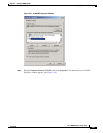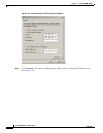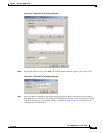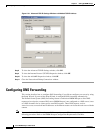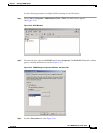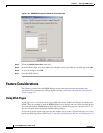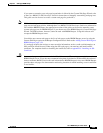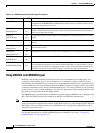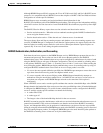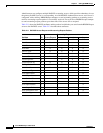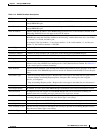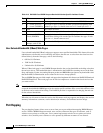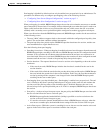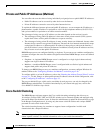
2-40
Cisco BBSM Hotspot 1.0 User Guide
78-15293-01
Chapter 2 Setting Up BBSM Hotspot
Feature Considerations
Private and Public IP Addresses (Multinet)
You can offer end users the choice of using individually assigned private or public DHCP IP addresses:
• Public IP addresses can be accessed by other devices on the Internet.
• Private IP addresses cannot be accessed by other Internet devices.
To explain the difference between private and public IP addresses, we can compare the IP address to a
phone number. A public IP address is equivalent to a full 10-digit telephone number (619-555-1234),
and a private address is equivalent to an office extension number.
The advantage of using one type of IP address over the other depends on the end user’s needs:
• The advantage of using public IP addresses is that some virtual private network (VPN) systems
require their clients to have public IP addresses to operate correctly.
• The advantage of using private IP addresses is many security threats are eliminated, because other
Internet devices cannot access private IP addresses. Because the local network automatically maps
each private IP address to a different public IP address for data going to and from the Internet, a
private IP address is never visible on the Internet. In addition, because private IP addresses are free,
they of course cost less than public IP addresses.
BBSM Hotspot servers are configured initially as singlenet. If you want to use a multinet configuration,
you must reconfigure the server for multinet. Singlenet and multinet BBSM Hotspot servers are defined
as follows:
• Singlenet—A singlenet BBSM Hotspot server is configured as a single logical subnet and only
supports one logical subnet of IP address.
• Multinet—A multinet BBSM Hotspot server is configured with two distinct logical subnets and
supports both public and private IP addresses.
To change your BBSM Hotspot server to a multinet configuration, you must configure Windows for
multinet. Refer to the “Configuring Windows for Multinet” section on page 2-26.
To configure public or private IP addresses, refer to the “Running the Address Change Wizard” section
on page A-1. To add, change, or delete public-private IP addresses after the initial configuration, refer
to the “Configuring IP Addresses” section on page 3-3.
The per-port default IP type, which can be overridden by web page sets, can only be changed by the
BBSM Hotspot administrator. To add this functionality to your custom web page sets, refer to the
Cisco BBSM 5.2 SDK Developer Guide.
Cisco Switch Clustering
The BBSM Hotspot software supports the Cisco switch clustering technology that allows up to
16 switches (Catalyst 2950, 3500, and 3550 XL switches) to be clustered together and managed using
just one IP address for the entire cluster. It allows the administrator to update the Network Devices page
in the Hotspot Configuration tool, by using only the master switch IP address and a unique SNMP
password for each switch in the cluster.
The switch clustering feature also continues to support cluster configurations in which each
cluster/switch has a unique IP address.
Note Before running the Setup Wizard, the administrator must enable the switch clustering capability for all
cluster-capable switches. For detailed information, refer to your switch documentation.



